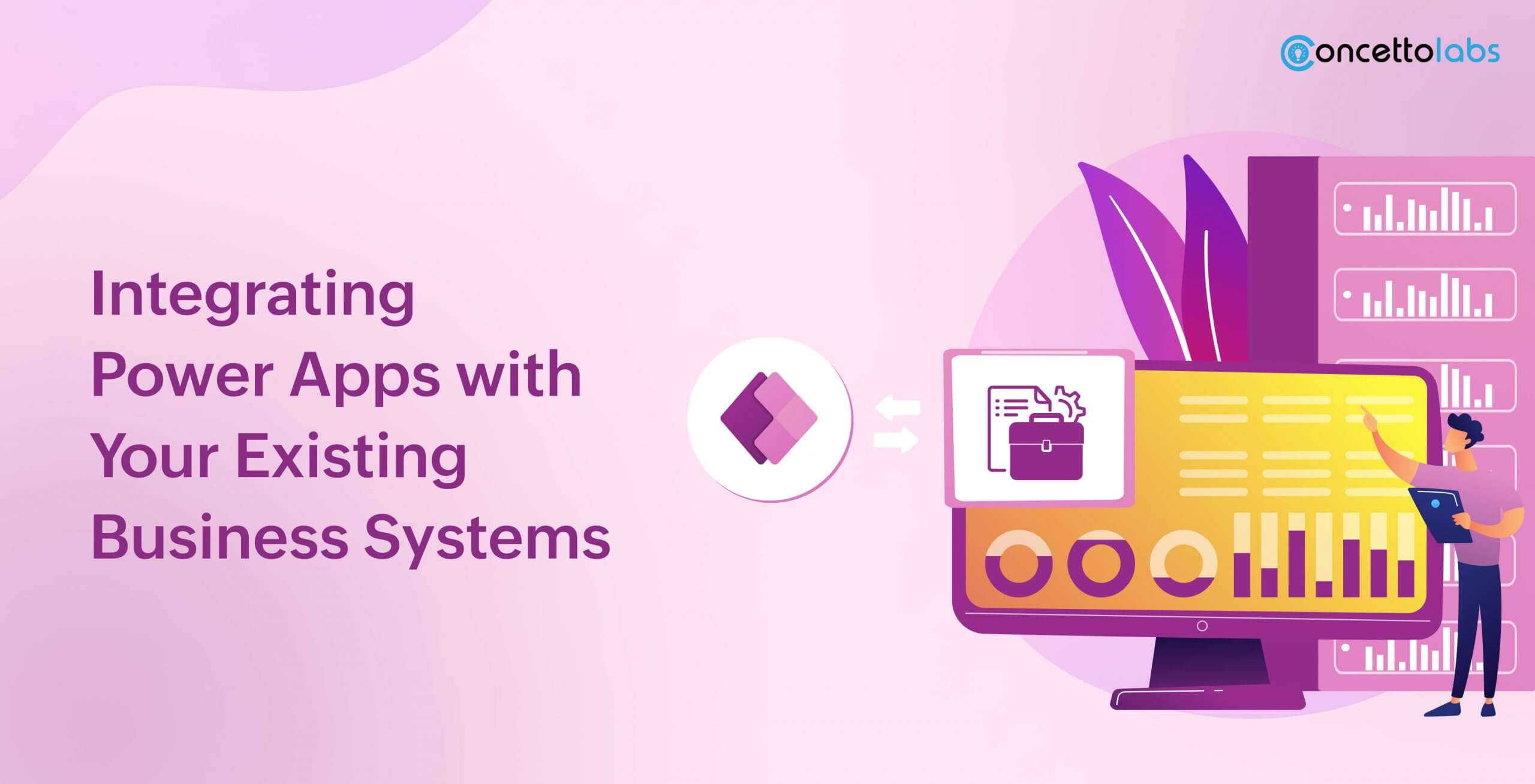
Summary: Integrating innovative tools like Power Apps with existing business systems is crucial for maximizing efficiency and flexibility. Microsoft Power Apps Development, part of the Dynamics Power Platform, offers low-code development capabilities, enabling businesses to create custom applications quickly. The blog examines the operation, framework, capabilities, benefits, and limitations associated with integrating Power Apps, together with real-life applications across several different industries.
Microsoft Power Apps is a strong platform that enables organizations to develop individualized apps suited to their unique business needs, even without in-depth coding capabilities. When integrated with existing business systems, Power Apps enhances the organization’s ability to streamline workflows, automate processes, and increase productivity.
The integration of Power Apps with your existing business systems is essential for businesses looking to innovate and digitize their operations. Connecting with databases, legacy systems, or today’s applications allows Power Apps to deliver a more efficient and unified means of managing and engaging with data.
Understanding the Framework for Integration
The framework for integrating Power Apps with business application systems revolves around data connectivity, application interfaces, and security. Power Apps links to assorted data sources via embedded connectors, including Dynamics 365, SharePoint, and SQL Server, in addition to multiple others.
To facilitate smooth integration:
API Management: For effective interaction with existing systems, Power Apps depend critically on APIs. These allow communication that is unimpeded among several platforms and services.
Common Data Service (CDS): CDS acts like a centralized data model, simplifying data management and exchange for Power Apps between different systems.
Security Protocols: Microsoft secures all data exchanged by Power Apps through the Azure AD application and various authentication methods.
Power Apps Integration Capabilities
While integrating with your existing business systems, Power Apps supports a wide range of platforms.

Some of the key integration capabilities include
- Pre-built connectors: With its collection of hundreds of connectors for famous business systems, Power Apps offers users convenient access to data from Salesforce, Dynamics 365, SharePoint, and Excel.
- Custom connectors: For sets of systems that have no prior connectors, Power Apps allows you to develop custom connectors based on APIs for integrations.
- Flow automation: Incorporating Power Apps along with Power Automate (formerly referred to as Microsoft Flow) increases workflow automation by allowing app-triggered actions between interlinked systems.
The features permit companies to develop a coordinated ecosystem in which applications can communicate without issues, encouraging process enhancements and efficiency.
Connectivity of Power Apps
Power Apps links with a variety of platforms, delivering solid connectivity that confirms smooth communication between your business systems and the app.
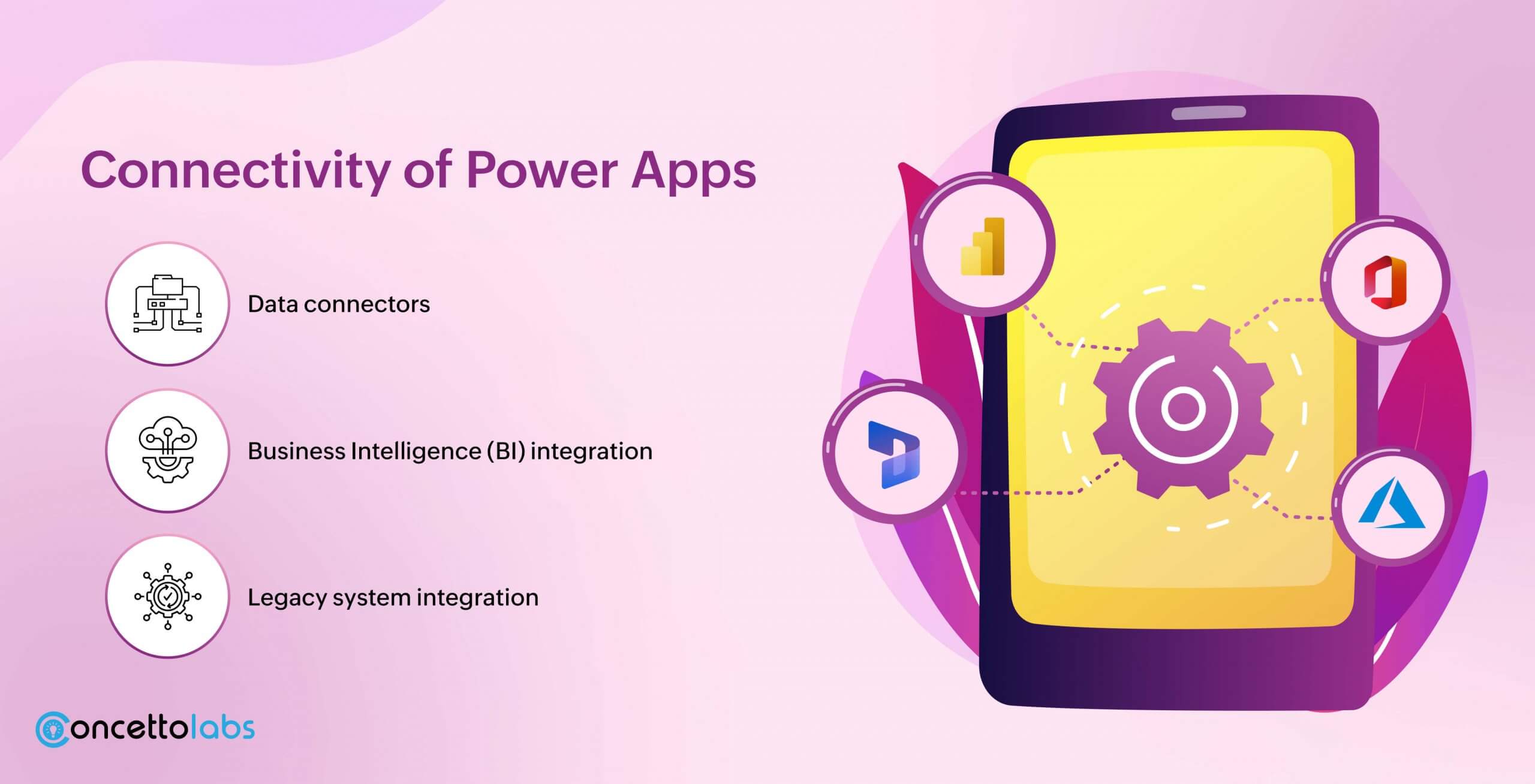
The platform’s connectivity features include
- Data connectors: Currently, Power Apps supports about 400 connectors, which include well-known platforms such as Office 365, Dynamics 365, SQL Server, and Azure.
- Business Intelligence (BI) integration: By integrating BI Power Apps with platforms like Power BI, businesses can create visually rich dashboards that offer real-time insights into their operations.
- Legacy system integration: The addition of Power Apps to legacy business systems using APIs or connectors enables older systems to profit from modern application technology.
By tapping into these connectors and integration points, organizations have the ability to extract greater value from their current systems and better their total digital infrastructure.
Planning Your Integration Project
Planning is critical for successfully integrating Power Apps with existing business systems. An effective integration strategy assures that the approach is both efficient and affordable and achieves the necessary business outcomes.
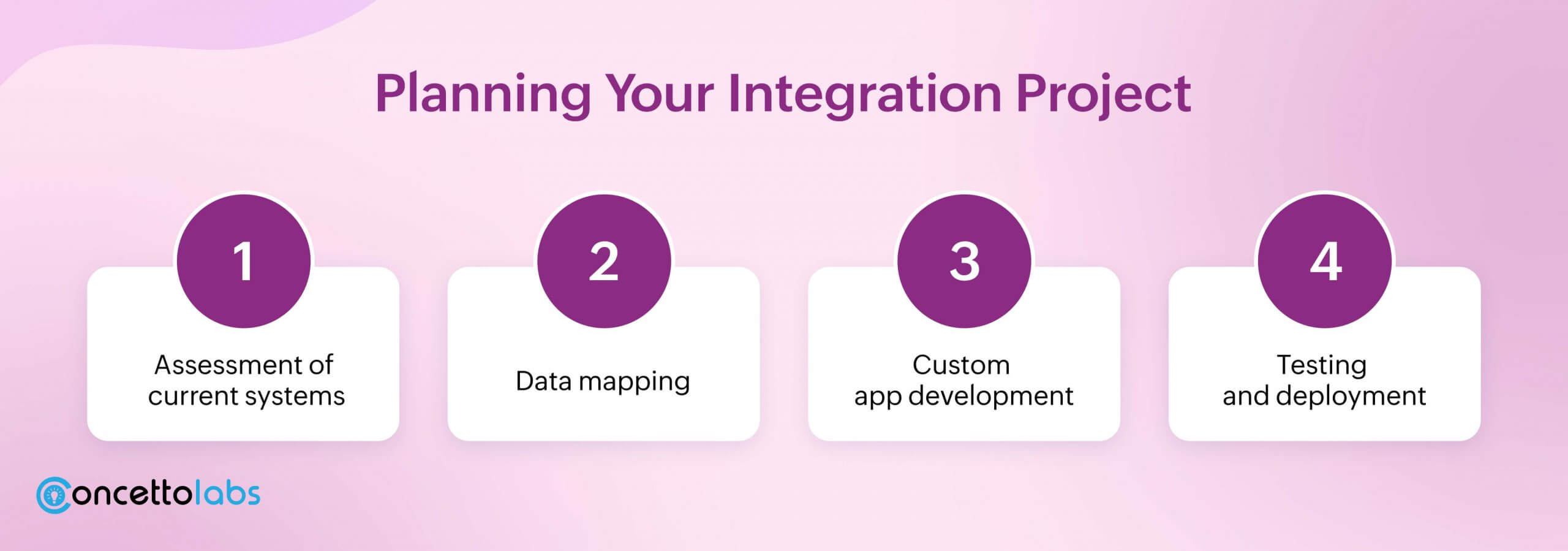
Key steps to consider
- Assessment of current systems: Conduct a thorough analysis of your current business application systems and data flows. Find places of difficulty where solutions exist with Power Apps.
- Data mapping: Analyze data flow in an extensive collection of systems and identify places where integrations can occur to better communication.
- Custom app development: Considering your needs, make a choice between creating personalized Power Apps or making use of available templates.
- Testing and deployment: You need to validate the integration in a structured setting prior to implementation to securely support your business workflows.
Making effective strategies enables companies to ensure that the transitions in Power Apps integration are seamless and can achieve their benefits.
Benefits of Integrating Power Apps
The benefits of integrating Power Apps with your existing business systems are numerous.
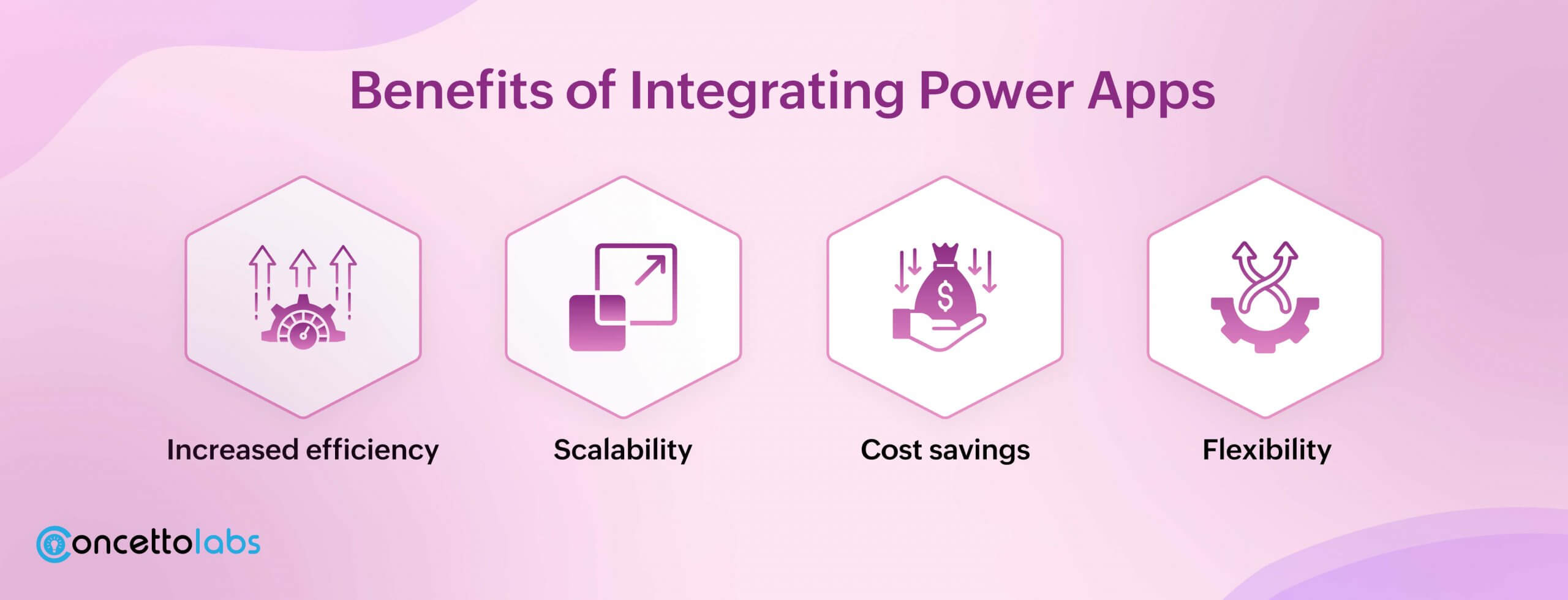
These include
- Increased efficiency: By automating manual tasks, we significantly lessen the time needed for repetitive work, which allows us to allocate resources better toward more important projects.
- Scalability: Power Apps support your business growth by allowing you to expand solutions to accommodate greater datasets or advanced workflows.
- Cost savings: The expense of creating custom applications with Power Apps is lower than that of conventional software development, permitting organizations to save on development and operational outlays.
- Flexibility: Built to meet the exacting needs of businesses, Power Apps provides the versatility to design solutions that maintain agility and flexibility as change occurs.
Limitations and Considerations
While PowerApps offers numerous advantages, there are also limitations and considerations to keep in mind when integrating it with your business systems:
- Learning curve: Despite being a low-code platform, Power Apps needs a certain level of technical knowledge for complicated integrations.
- Connector limitations: They can be connectors that either carry usage limitations or lack the sophisticated functionalities demanded by legacy systems.
- Licensing costs: The user count, number of premium connectors, and any advanced features you need may affect the upgrade in PowerApps licensing.
These limitations make one consider the critical need for a detailed analysis of your individual business requirements and potential hurdles during the integration of Power Apps with your existing tools.
Enhancing Business Processes with Power Apps
The automation, data accessibility improvements, and collaboration tools make Power Apps capable of greatly improving business processes.
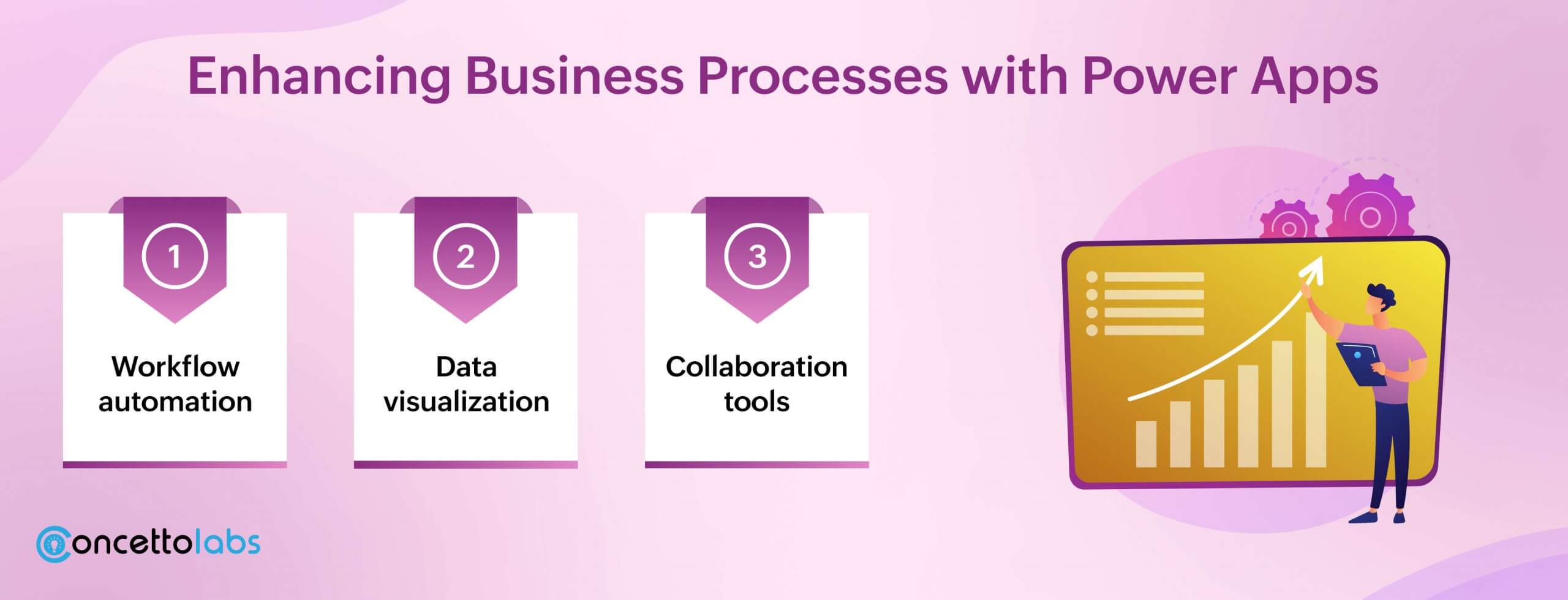
For example
- Workflow automation: Implement all the processes you need – from automated approval to expense tracking and customer requests – with integrated Power Apps and Power Automate.
- Data visualization: Integrate Power Apps and Power BI for complete data visualization to enhance making decisions.
- Collaboration tools: Teams and SharePoint from Office 365, along with Power Apps, have the potential to increase teamwork in several departments.
Businesses can streamline their processes, diminish bottlenecks, and raise productivity via Power Apps for process improvements.
Power Apps in Different Industries
Power Apps can be leveraged in various industries to address specific needs:
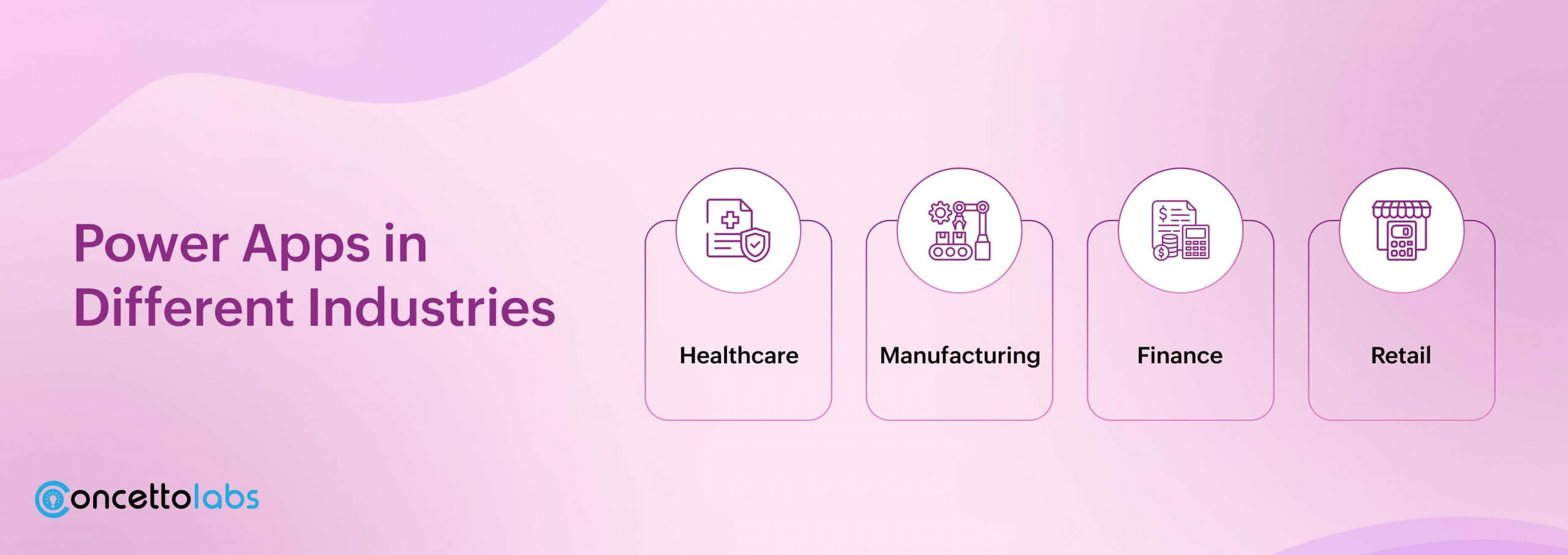
- Healthcare: Applications custom-built for patient data management along with appointment scheduling and integration of telemedicine.
- Manufacturing: Workflow automation entails the surveillance of inventory as well as the administration of maintenance records.
- Finance: Dashboards designed for the personal exploration of financial data are in partnership with tools for regulatory compliance and fraud identification.
- Retail: Solutions focused on customer service, integrating them with the point of sale, and personalizing marketing.
Every one of these industries can derive advantage from custom apps designed to improve operational efficiency and meet unique operational needs.
Looking to Modernize Your Business Systems?
Reach out today to explore how Power Apps integration can simplify your operations!
Consult Our Expert!Conclusion
Integrating Power Apps with your existing business systems opens up a world of possibilities for driving business growth, improving efficiency, and reducing costs. Organizations can improve their operation efficiency and protect their digital structure for the future by using the platform’s connectivity capabilities and integration framework. Yet, successfully merging requires careful thought about limitations and making plans.
Frequently Asked Questions
Here are some frequently asked questions about employing our developers that may help you.


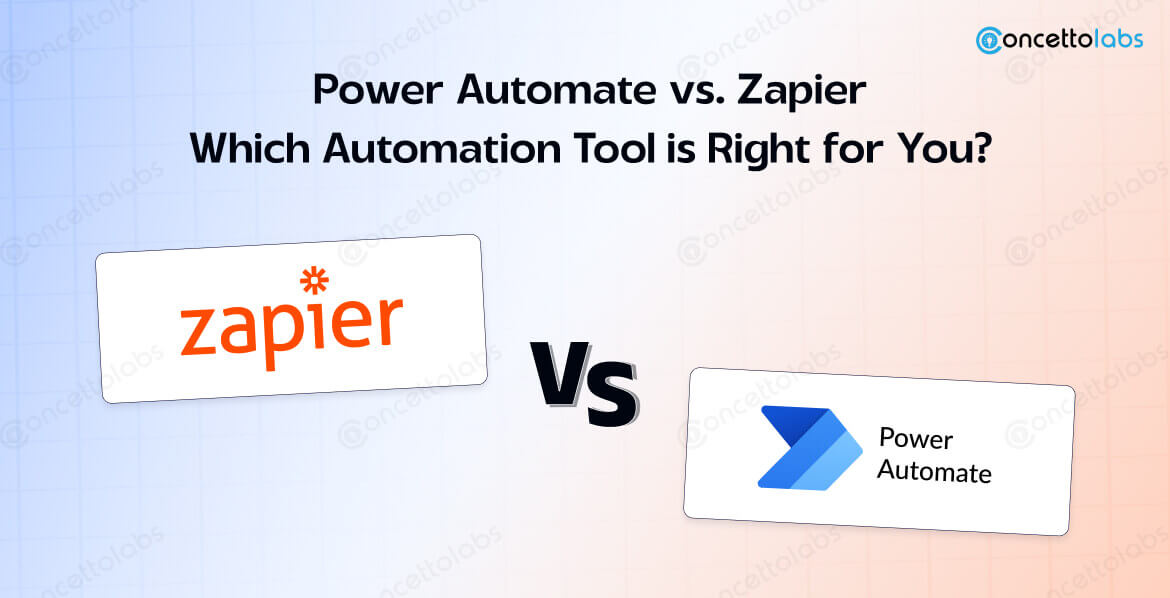
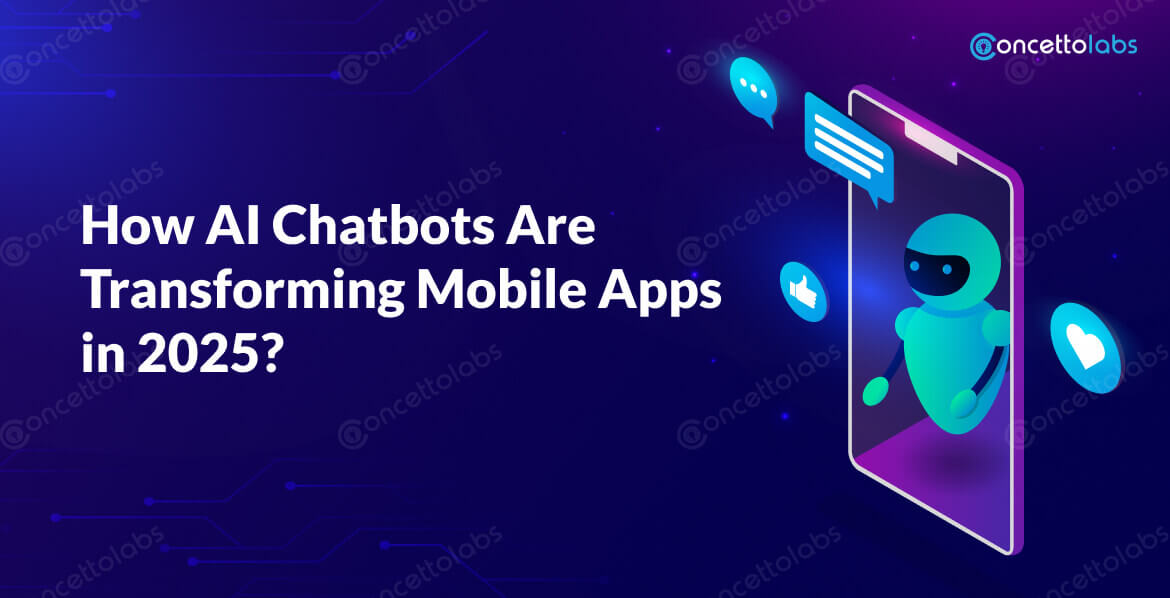





 Indonesia
Indonesia
 Botswana
Botswana
 USA
USA
 Italy
Italy
 Panama
Panama









 USA
USA UK
UK Saudi Arabia
Saudi Arabia Norway
Norway India
India Australia
Australia